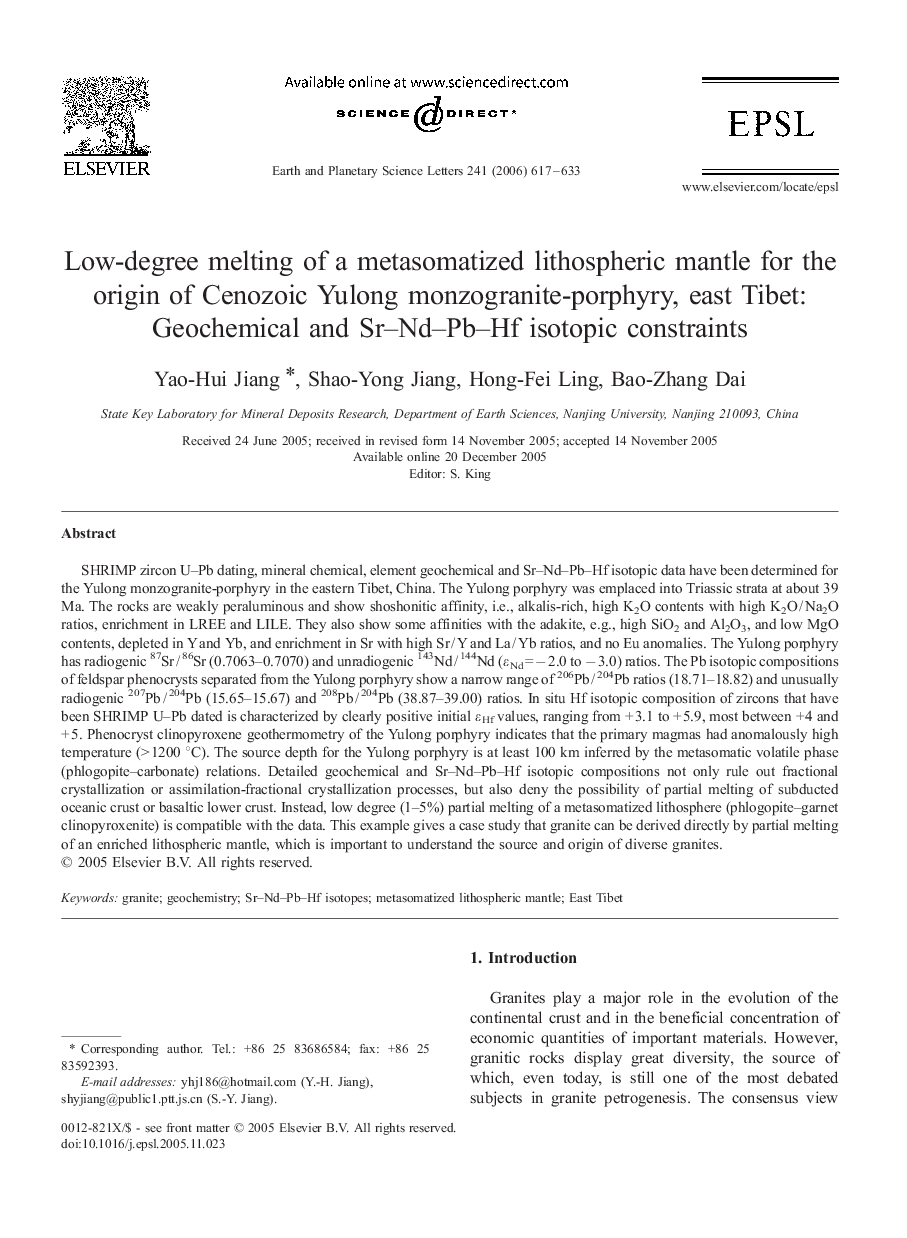| Article ID | Journal | Published Year | Pages | File Type |
|---|---|---|---|---|
| 4681205 | Earth and Planetary Science Letters | 2006 | 17 Pages |
SHRIMP zircon U–Pb dating, mineral chemical, element geochemical and Sr–Nd–Pb–Hf isotopic data have been determined for the Yulong monzogranite-porphyry in the eastern Tibet, China. The Yulong porphyry was emplaced into Triassic strata at about 39 Ma. The rocks are weakly peraluminous and show shoshonitic affinity, i.e., alkalis-rich, high K2O contents with high K2O / Na2O ratios, enrichment in LREE and LILE. They also show some affinities with the adakite, e.g., high SiO2 and Al2O3, and low MgO contents, depleted in Y and Yb, and enrichment in Sr with high Sr / Y and La / Yb ratios, and no Eu anomalies. The Yulong porphyry has radiogenic 87Sr / 86Sr (0.7063–0.7070) and unradiogenic 143Nd / 144Nd (εNd = − 2.0 to − 3.0) ratios. The Pb isotopic compositions of feldspar phenocrysts separated from the Yulong porphyry show a narrow range of 206Pb / 204Pb ratios (18.71–18.82) and unusually radiogenic 207Pb / 204Pb (15.65–15.67) and 208Pb / 204Pb (38.87–39.00) ratios. In situ Hf isotopic composition of zircons that have been SHRIMP U–Pb dated is characterized by clearly positive initial εHf values, ranging from + 3.1 to + 5.9, most between + 4 and + 5. Phenocryst clinopyroxene geothermometry of the Yulong porphyry indicates that the primary magmas had anomalously high temperature (> 1200 °C). The source depth for the Yulong porphyry is at least 100 km inferred by the metasomatic volatile phase (phlogopite–carbonate) relations. Detailed geochemical and Sr–Nd–Pb–Hf isotopic compositions not only rule out fractional crystallization or assimilation-fractional crystallization processes, but also deny the possibility of partial melting of subducted oceanic crust or basaltic lower crust. Instead, low degree (1–5%) partial melting of a metasomatized lithosphere (phlogopite–garnet clinopyroxenite) is compatible with the data. This example gives a case study that granite can be derived directly by partial melting of an enriched lithospheric mantle, which is important to understand the source and origin of diverse granites.
